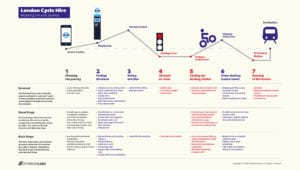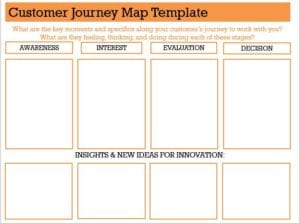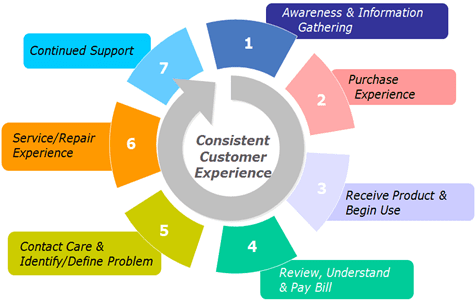Learn about customer journey mapping in our introductory guideJourney
Customer journey maps can be an incredibly useful tool to help businesses gain insights into their customers, and ultimately, both attract and design better products and services with their customers in mind. You can get started in a simple way creating a visual customer journey map either on paper or with a digital tool. There are helpful tools available online to help you build your own customer journey map or templates to work from -such as this Miro Customer Journey Map Template.
Read on to learn more about what journey maps are, how you can create them, and how they can be used to drive innovation at your company.
1. What are customer journey maps?

Journey maps lay out the customer’s experience: from initial contact with your brand or product throughout their engagement and into the long-term relationship. Essentially, it helps you as a company identify the key interactions a customer has with your brand, which can lead to insights to help you grow or improve your products and services.
Journey maps come in many different forms, but perhaps the most common is infographics.
When laying out a journey map, remember that you are trying to think from a customer’s point of view – not what you as an internal leader think about the brand.
Customer experience mapping is another useful way to look at the customer experience and journey from a broad perspective. Learn more and find customer experience mapping templates on our blog.
2. How do I get started creating a journey map?
Creating journey maps needs to start with really knowing your customers. It’s likely that you already know some things about your customers – their values, behaviors, and beliefs. But journey maps take this information a step further, and require solid and thorough research to get right. You can get started by gathering all of the existing research your company has on your consumers. Then, you’ll want to move onto other research sources.
There are two types of research, analytical and anecdotal. For analytical research, you can turn to many sources to obtain data on your users, including your website analytics, social media analytics and mentions, search data, and even from a survey.
Anecdotal research comes from directly speaking with your customers and listening to what they have to say. You can turn to focus groups or social media communication to ask your customers directly what they think about your brand and how they interact with your services.
3. I’ve done research. Now what?
Now you need to begin thinking about goals and what you are trying to accomplish or understand through this process. You’ll want to start by thinking about what the key stages of customer interaction are with your product or service – for example:
- Discovery
- Research
- Purchase
- Deliver
- After sales
Identify what information you want to include in your map, thinking of common things such as:
- What is my user trying to accomplish at this stage?
- What does my user want to know at this stage?
- How does the user interact with the product at this stage?
- What is the user feeling at this stage?
- Who or what is helping the user’s decision-making process at this stage?
From there, you can create a grid with stages on one axis and the information you want to know on the other. While the final product doesn’t need to look like this grid, it’s an easy way to begin the process and start thinking about the information you need to know as you build your map.

Now that you’ve built your customer journey map, it’s important that you actually use your new tool in the future. Journey maps can help you explore and understand your customers better, which can lead to innovations and better solutions and products for your customers. If you’d like to apply more, contact us for deeper customer journey mapping training or a journey mapping workshop.
Check out this post about UX activities for design thinking and more of our innovative resources blog for tips on innovation and design thinking to help your business succeed.

